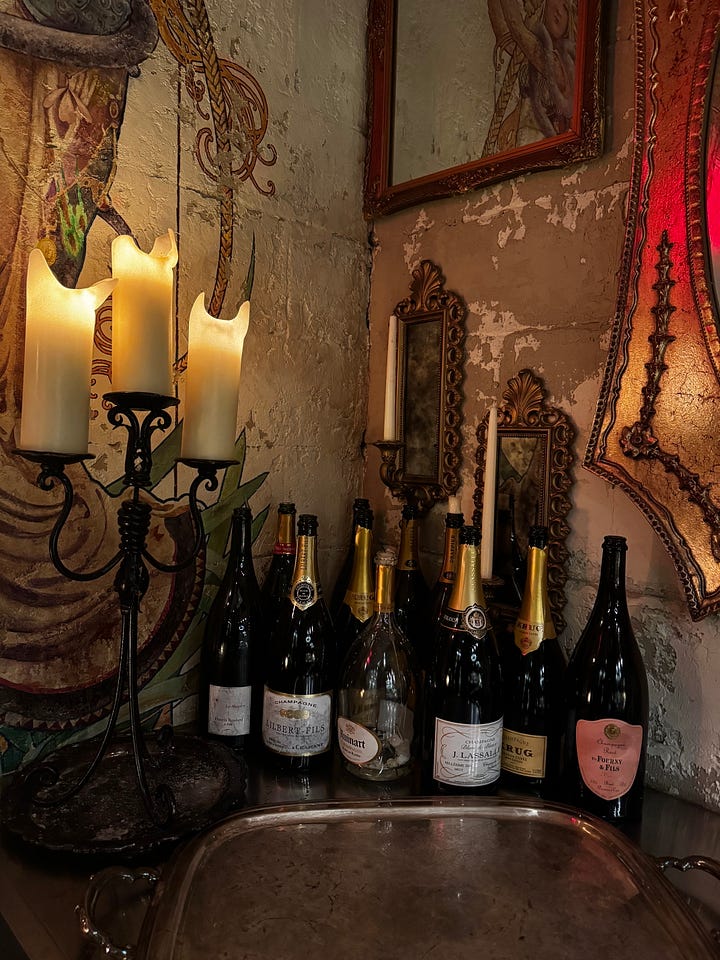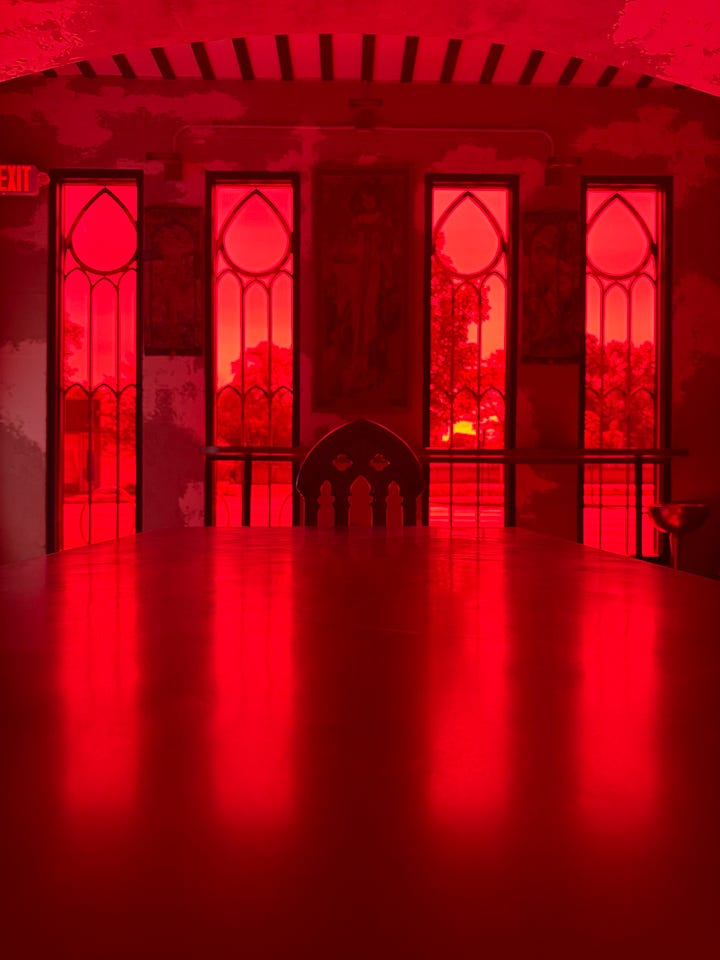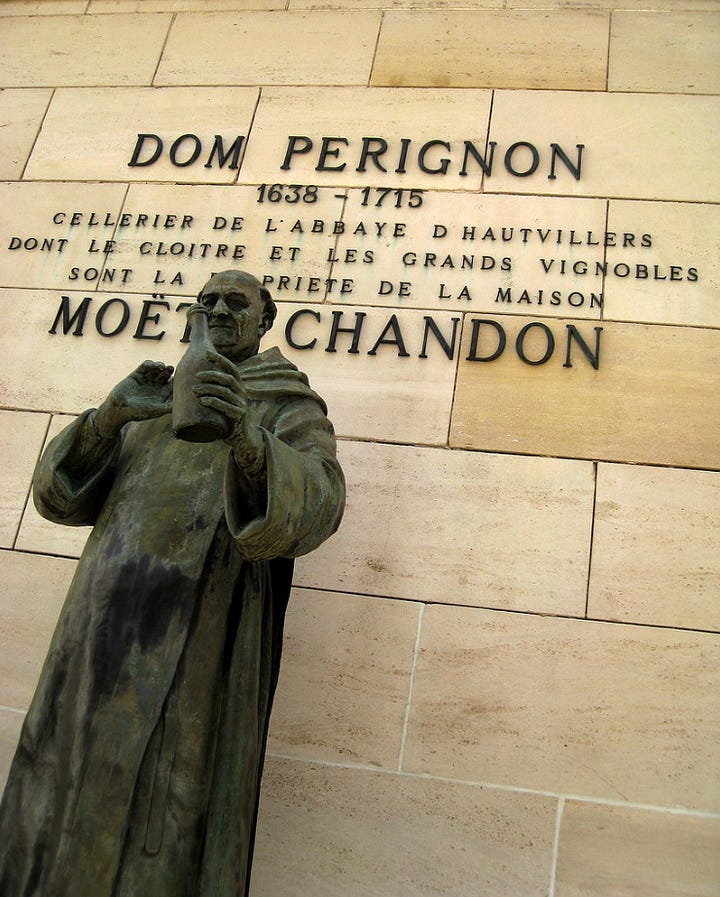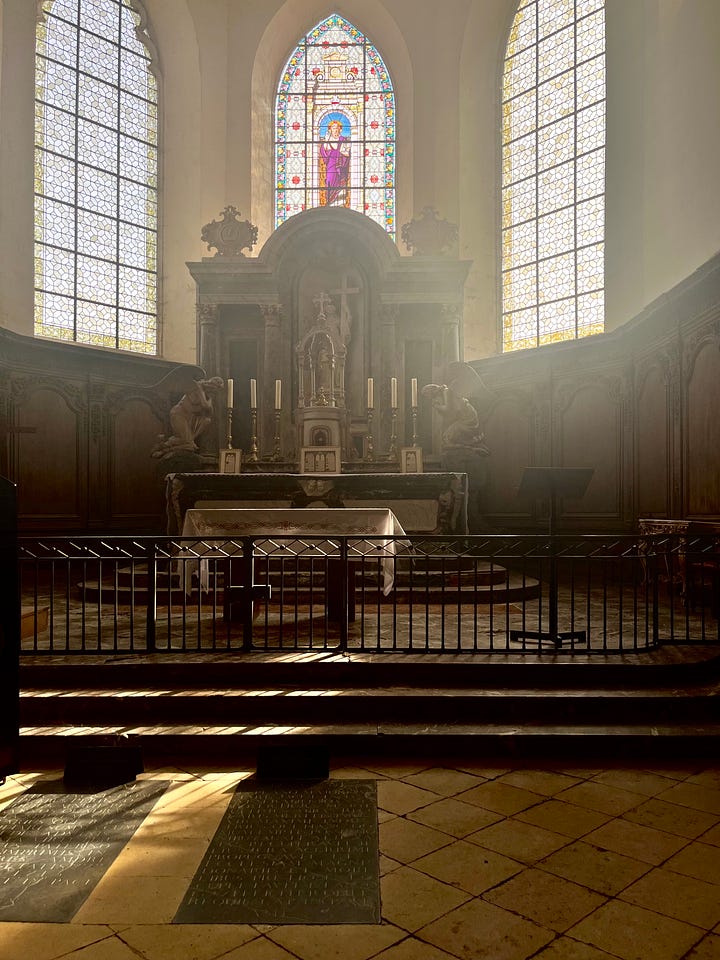Champagne is made with red grapes.
Meunier's glow up, pre-order six-packs and a tasting in March...
Hi, friends!
Welcome to the solemn dirge that is late-winter in Michigan. If you’re anything like me, you consumed your holiday 6-pack long ago, ‘damp’ January is coming to a close, and you’re looking to replenish your champagne stash. Have no fear - I am packing up another round of 6-packs to get us through! Pick-up is March 9th (Daylight Savings Time! The light is coming!) between 12pm-2pm. All new champagnes to pair with your emotional support stews, braises, and soups. I include some history and descriptions of each wine in the pack - PLUS a few bonus recipes from Chef James. We all need a little something to look forward to.


I’m heading back to Champagne in April and look forward to bringing back all of the information and inspiration that I can. I’m most excited for our tasting at Roederer - a nearly impossible reservation. Thanks to you, we sold over 350 cases of champagne in 2024. That is an incredible accomplishment that allows me to access even more impressive wines for us to taste and learn about together. Let’s keep the momentum going.
Lately, I’ve been thinking a lot about champagne misconceptions. Of course, there are the presumed societal contracts of the beverage: bubbles are relegated to bridal showers, holidays, and promotions. Secondly, the oft-repeated comment that champagne isn’t food friendly wine (!!) or that it breeds headaches and hangovers. The Midwest automatically associates winter cuisine with a glass of bold red wine. I honor that. But, one of the most misunderstood aspects of champagne is its contents - champagne is made from grapes (CHAMPAGNE IS WINE), and oftentimes red grapes at that.


Pinot Noir is technically the king of champagne grapes - 38% of Champagne’s vines are Pinot1. Most of the recognizable champagne houses feature Pinot dominant blends as their flagship wines (Veuve Cliquot, Moët & Chandon, Bollinger). Dom Pérignon keeps their cépages (grape blend) under wraps, but I suspect it’s Pinot Noir focused, as well. The figure of Dom Pérignon, an actual Benedictine monk making wine for his congregation in the 1600s, is falsely credited with discovering the champagne method. Although he did not invent sparkling wine, he should be thanked for his dedication to harvesting quality grapes, blending with precision, and making the first white wine from pigmented grapes. The champagne basket press delicately presses the clear juice from red-skinned grapes, extracting all of the flavors and aromas of the red fruit, and leaving behind the color. Red-grape focused champagne blends often have the power, structure, and finesse of a still red wine.
I must mention the other red grape of champagne: Meunier. Formerly known as Pinot Meunier, this varietal is named for the French term for ‘miller’ because the underside of its leaves look as if they’ve been dusted with flour. Meunier accounts for 31% of total vineyard acreage today. Reliable and fruitful, Meunier is frost and freeze-resistant and is planted in areas that suffer from both. Its secondary buds bear fruit, so even after a hard frost, it can produce a small crop.2 Historically, Meunier was thought to only bring value to blends in small percentages. It oxidizes quicker than Chardonnay and Pinot Noir, which implies it may not be age-worthy. Young producers are dispelling these myths, featuring higher percentages of old-vine Meunier or single-varietal versions that dazzle.
Meunier fascinates me. Pinot Noir is heavier in body, but Meunier is fruitier; and not in an easy-going, convivial way. Meunier on its own can be formidable, even sexy. The wines intrigue with notes of juicy pomegranate, red currant, rosemary, anise, and caraway. Because of champagne’s ever-warming climate and the multifaceted fruit profile of the grape, low-to-no dosage is preferred. The resulting wines are serious AND sensitive. Down-to-earth yet complex. Vulnerable without being obvious. In short, Meunier is the Marlon Brando of champagne grapes.
My Meunier fixation inspired our champagne tasting in March: a study in light vs. dark on the Spring equinox. Wednesday, March 19th in the wine cave, we’ll blind taste dark-fruited wines against their lighter counterparts. Meunier vs. Chardonnay3 to usher in brighter days. I hope to see you there.
XO
Paulina
p.s. Chef James launched a very cool new project this month: the mabel gray travel guide. If you’re at all interested in food, travel or adventure - subscribe at this link here!
https://www.champagne.fr/en/about-champagne/a-great-blended-wine/champagne-and-its-grape-varieties
Wine Scholar Guild. ‘Champagne Master-Level’ Study Manual. Revised by Peter Liem. 2022.
Links to events in this post! Spring 6-Pack Pre-Orders and Equinox Champagne Tasting.










I was just about to blindly sign up for the March event, and then was like, let me double check the date. Unfortunately (or not) I’ll be in Japan… I think Chef would be proud still.